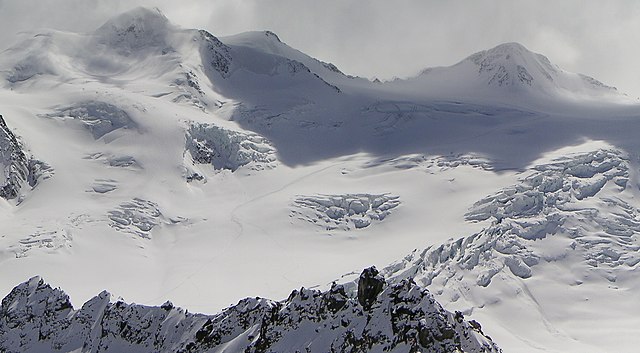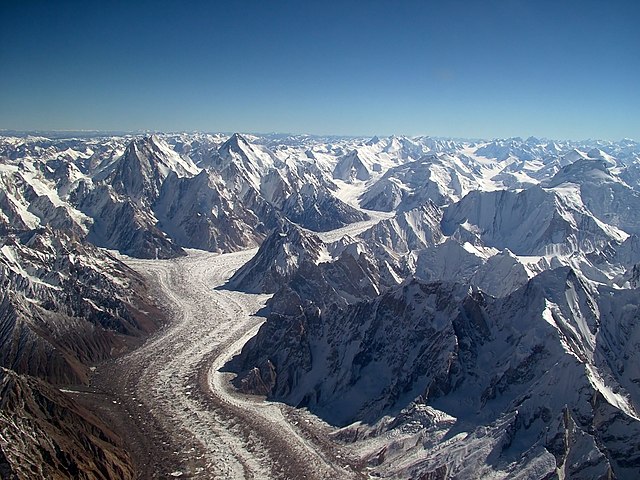Mertz Glacier is a heavily crevassed glacier in George V Coast of East Antarctica. It is the source of a glacial prominence that historically has extended northward into the Southern Ocean, the Mertz Glacial Tongue. It is named in honor of the Swiss explorer Xavier Mertz.
Mertz Glacier
A glacier is a persistent body of dense ice that is constantly moving under its own weight. A glacier forms where the accumulation of snow exceeds its ablation over many years, often centuries. It acquires distinguishing features, such as crevasses and seracs, as it slowly flows and deforms under stresses induced by its weight. As it moves, it abrades rock and debris from its substrate to create landforms such as cirques, moraines, or fjords. Although a glacier may flow into a body of water, it forms only on land and is distinct from the much thinner sea ice and lake ice that form on the surface of bodies of water.
Glacier of the Geikie Plateau in Greenland.
The Taschachferner in the Ötztal Alps in Austria. The mountain to the left is the Wildspitze (3.768 m), second highest in Austria.
With 7,253 known glaciers, Pakistan contains more glacial ice than any other country on earth outside the polar regions. At 62 kilometres (39 mi) in length, the pictured Baltoro Glacier is one of the world's longest alpine glaciers.
The Quelccaya Ice Cap in Peru is the second-largest glaciated area in the tropics





